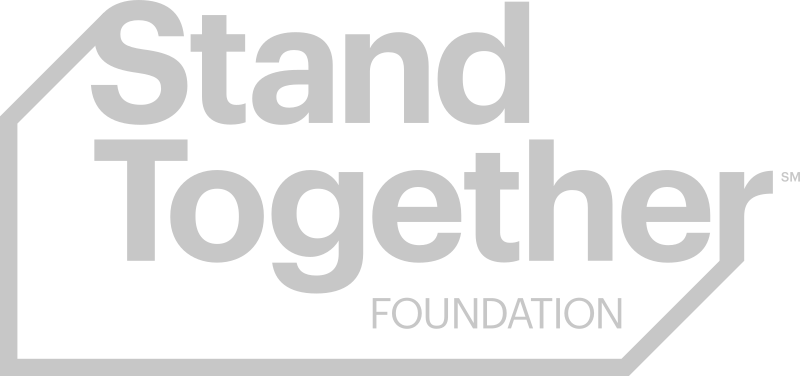On a football field on Chicago’s West Side, Ed Daniels dreamed.
For three years, he played high school football, juking would be tacklers, until his dream was ended in that vicious way sports dreams can be.
“I broke my leg,” Daniels says. “I broke my tibia and my fibula. And it broke my heart.”
Hope dashed and looking for purpose, Daniels found himself joining a different type of community. “After football was over, the streets was it,” he says. “Leading a gang made me feel like a man again.”
A decade ago, fresh out of high school, a moment would change the entire trajectory of his life. Daniels and members of his gang rolled and robbed a delivery man named Guillermo. “As I’m in my jail cell, I’m thinking about who this guy even was,” Daniels says. “Does he have a family? Did he die? Is he ok?”
He would get the chance to find out.
Restorative Justice
Daniels’ lawyer at the time, Cliff Nellis, asked if Guillermo would be willing to sit down with his client and talk, face to face.
It is an approach called restorative justice, which relies on community, and not incarceration, to fight violence and crime. Restorative justice centers around the idea that young people need the embrace of a community, including education, employment, health services, and conflict resolution, to thrive; that justice is about repairing harm more than meting out punishment. After the meeting, victims can decide if they want to press charges.
Nellis is now the executive director of the Lawndale Christian Legal Center, which provides free legal services to members of the community, including restorative justice circles and the support of social, psychological, and job training professionals. LCLC is a graduate of Stand Together’s Catalyst Program, where they received the guidance and capital needed to grow their on-the-ground, community-driven approach to making North Lawndale a better place.
And it’s working: 89% of the kids Nellis has worked with have never returned to crime.
“Real transformation takes place in the healing circle, because you have a greater understanding of what happened and greater human connection to the people impacted by it,” Nellis says.
“And through that, both the victim is restored and healed; the defendant takes a more meaningful, personal level of accountability; and the community comes together to support that process.”
Guillermo agreed to sit and talk with Daniels. Daniels apologized; Guillermo asked if he was ok. An emotional bond was forged that would lead to the charges being dropped, to the two becoming friends, to Daniels working in the same restaurant as Guillermo did.
“This man saw grace and mercy in me,” Daniels says.
Changing the Community
“You’ve got 1500 juveniles every year getting arrested in a small neighborhood like North Lawndale,” Nellis says. “Crime is not something that we can arrest our way out of.”
The problem with the current criminal justice system’s sweeping, top-down approach to treating youth is that it is not geared to see youth, Nellis says. It is instead a series of laws and punishments, with nothing done to make sure communities become stronger and safer. It disregards the value of people.
“We believe that every human being has value,” Nellis says. “And that, although young people make mistakes — particularly in their formative years — that they still have hope and a future. And great potential.”
Lawndale Christian Law Center instead takes a personalized, holistic approach for every client. By working with a team of legal, social, psychological, and employment training professionals, the goal is to help each client not get past a broken law, but to attack the deeper issues at the core of the problems they face — issues often stemming from the systemic injustices they face every day.
Once a destination for black Americans fleeing the Jim Crow South, the neighborhood was decimated by redlining, civic planning, and white flight in the 1950s and 1960s.
Now, North Lawndale residents face crime rates three times higher than the city’s as a whole, and the neighborhood’s zip code accounts for 12% of all Illiois inmates. Unemployment and homelessness hit young men especially hard, LCLC says — a problem tackled by providing a place to live and vocational training.
Through restorative justice techniques like bringing Daniels and Guillermo together and personalized, holistic criminal defense, LCLC has made a true impact in their community.
In 2019 alone, LCLC served 309 clients — 92% of them were never rearrested.
Their mission is spreading. In 2021, LCLC began bringing restorative justice to three other Chicago neighborhoods as well, working with centers in Austin, East Garfield Park, and Little Village. And Nellis believes that restorative justice could do even more.
“I think if we took this model to scale nationally, we would reduce incarceration by at least 50%, if not more.”
A Second Chance
Restorative justice allowed Ed Daniels to see his potential. Guillermo’s forgiveness and the interest and care he showed Daniels in their meeting gave him a second chance at a new life, one not marred by time spent in the quicksand of the criminal justice system, one where he can own a thriving business and realize his potential.
“I will always be a better version of me because of Guillermo and restorative justice.My family, and having Cliff and the Legal Center behind me,” Daniels says, “ — it saved my life.”



